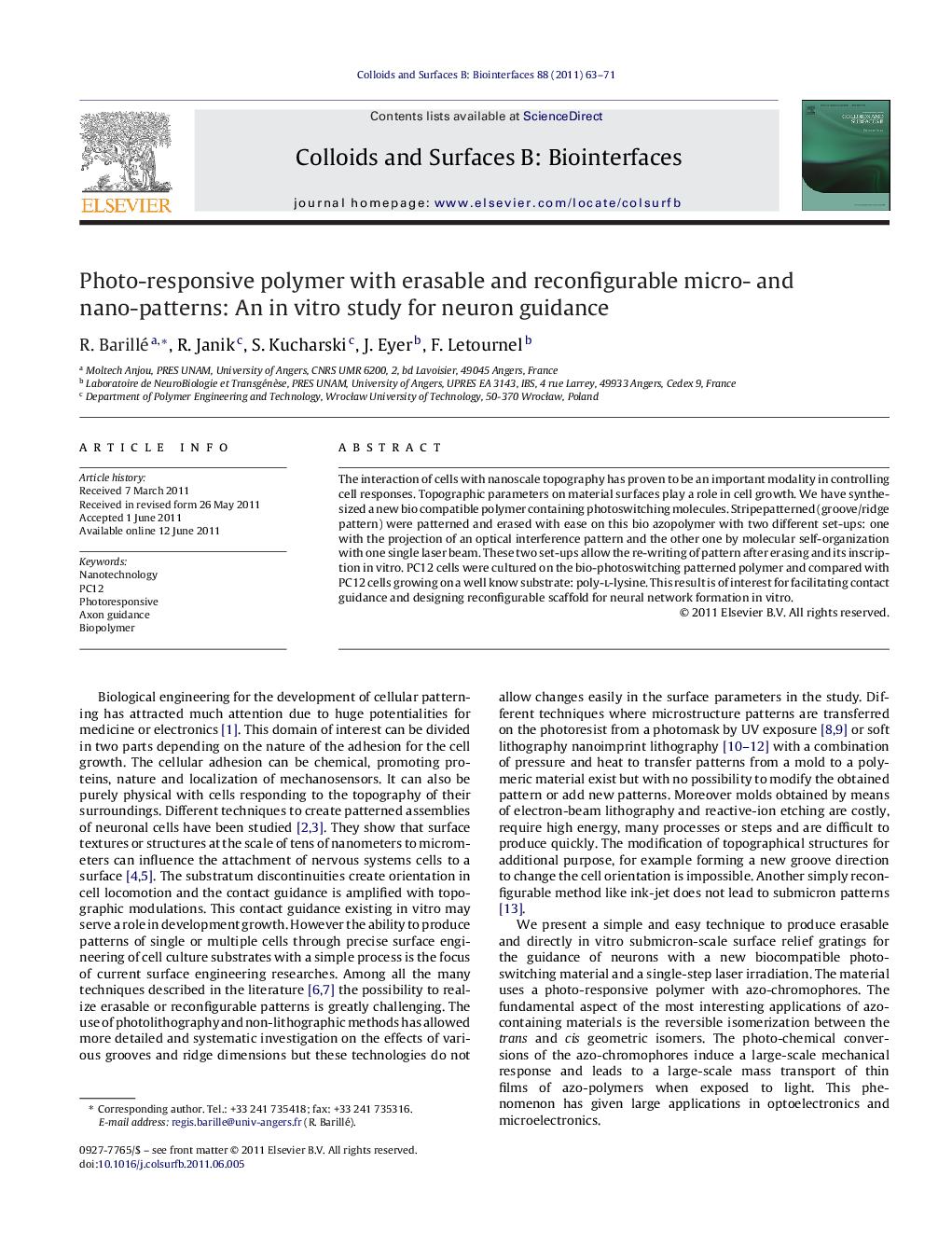| Article ID | Journal | Published Year | Pages | File Type |
|---|---|---|---|---|
| 601024 | Colloids and Surfaces B: Biointerfaces | 2011 | 9 Pages |
The interaction of cells with nanoscale topography has proven to be an important modality in controlling cell responses. Topographic parameters on material surfaces play a role in cell growth. We have synthesized a new bio compatible polymer containing photoswitching molecules. Stripepatterned (groove/ridge pattern) were patterned and erased with ease on this bio azopolymer with two different set-ups: one with the projection of an optical interference pattern and the other one by molecular self-organization with one single laser beam. These two set-ups allow the re-writing of pattern after erasing and its inscription in vitro. PC12 cells were cultured on the bio-photoswitching patterned polymer and compared with PC12 cells growing on a well know substrate: poly-l-lysine. This result is of interest for facilitating contact guidance and designing reconfigurable scaffold for neural network formation in vitro.
Graphical abstractFigure optionsDownload full-size imageDownload as PowerPoint slideHighlights► We have synthesized a new bio compatible polymer containing photoswitching molecules. ► This biopolymer can be patterned and erased with ease. ► We show the possibility to induce a pattern on the surface with a laser when the biopolymer thin film is immersed in a buffer solution. ► PC12 cells were cultured on the bio-photoswitching patterned polymer and compared with PC12 cells growing on a well know substrate: poly-l-lysine.
